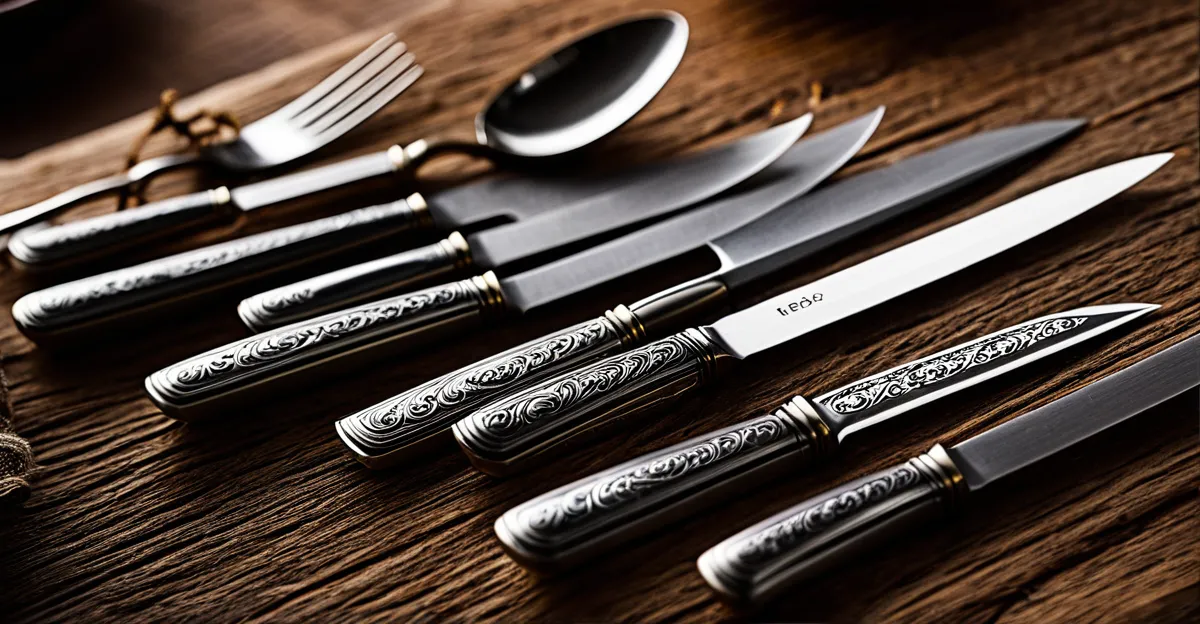Artisanal cutlery blends timeless craftsmanship with modern innovation, creating knives that serve as both functional tools and art pieces. From proprietary steels to collaborations with visionary designers, these handcrafted blades redefine quality and style, offering collectors and daily users alike a unique experience rooted in tradition and cutting-edge technique. Discover how these exceptional knives set themselves apart from mass-produced alternatives through design, material, and care.
The Art and Value of Handcrafted Cutlery: What Sets Artisanal Knives Apart
Artisanal knives stand apart because every element—shape, material, and finish—reflects deliberate choices made by skilled makers using traditional blade crafting methods. You can explore the unique craftsmanship, forging techniques, and rare premium materials that define these remarkable tools by visiting this page: More details available here.
Also read : How Is Sustainability Transforming Traditional UK Cooking Practices?
Unlike mass-produced alternatives, handcrafted knives fuse functional utility with artistic merit. Makers prioritize high-carbon steel knives and proprietary blends like AR-RPM9, prized for their razor sharp blades, resilience, and fine edge retention. Some knives showcase Damascus steel blades, known for their beautiful, swirling patterns and potent blend of hardness and flexibility. Other models feature ancient materials, such as Morta wood, which brings distinct character, age-old durability, and a tangible sense of legacy.
Key processes—hand-forging, heat treatment, and meticulous blade finishing—create kitchen tools that excel in daily performance yet remain visually striking. Many artisan knife makers also experiment with unique handle materials, such as fossilized mammoth ivory or ethically sourced hardwoods, to create ergonomic, collectible cutlery pieces that double as display-worthy art.
Topic to read : Discover artisanal cutlery: a blend of craftsmanship and history
This blend of function and artistry introduces a dual allure: collectors appreciate the historic value, small-batch uniqueness, and bespoke design, while home cooks and chefs benefit from superior cutting performance and tool longevity every day.
Mastering the Craft: Makers, Materials, and Cutting-Edge Innovation
Artisan knife makers blend traditional hand-forged kitchen knives with today’s most advanced techniques. Forged steel blades are achieved by precise metal forging processes, where expert use of knife forging tools shapes each blade’s hardness, blade heat treatment, and fine edge geometry. Companies like Artisan Cutlery, based in the UK but manufacturing in Yangjiang, China, illustrate how international artisan steel suppliers facilitate convergence of craftsmanship and technology.
Premium blade materials—ranging from high-carbon steel knives to Damascus steel blades—are the hallmark of both Japanese style handcrafted knives and Western style cutlery. These small-batch knife production runs lead to limited edition knives, often prized by collectors for their blade longevity and unique knife designs. Heritage wood and rare materials, like Morta and even fossilized mammoth ivory, bring individuality to every piece.
Luxury kitchen knives and hand-hammered knives showcase not only meticulous artisan blade finishing but also the depth of cutlery craftsmanship history. The increased cost of such pieces relates to artisan cutlery cost factors: sourcing, small-batch production, blade durability factors, and the hands-on labor behind these collectible knives.
Choosing, Caring For, and Collecting Artisanal Knives
Buying guide: assessing craftsmanship, materials, uses, and artisan credibility
Precision first: A handcrafted knife’s value rests on material authenticity, blade sharpness, handle comfort, and artisan transparency. Seek hand-forged kitchen knives made of forged steel blades, high-carbon steel knives, or even Damascus steel blades for resilience and razor sharp blades. Examine knife handle materials—wooden handle knives and ergonomic handle knives enhance kitchen knife safety tips and ensure lasting comfort.
Study blade heat treatment and finishes—hand-polished knives and unique knife designs distinguish true bespoke kitchen cutlery. Research artisan knife makers through interviews or community forums to validate skill and integrity. For cutlery set customization, prioritize proven artisans and understand artisan cutlery cost factors, particularly between online and local artisan knife shops.
Care and maintenance: sharpening, storage, and longevity
Use sharpening stones or professional sharpening tool types—follow recommended knife sharpening techniques and angles. Blade rust prevention begins with kitchen knife maintenance: dry blades promptly and consider storage in wooden knife blocks for both hand-forged kitchen knives and collectible knives.
Collecting: limited editions, art knives, and gifting
Focus on small-batch knife production, limited edition knives, or artisanal cutlery with cutlery gifting guide flair. Seek collectible knives featuring hand-forged vs machine-made knives distinction, and explore custom engraving options for memorable unique gifting for chefs and enthusiasts.






